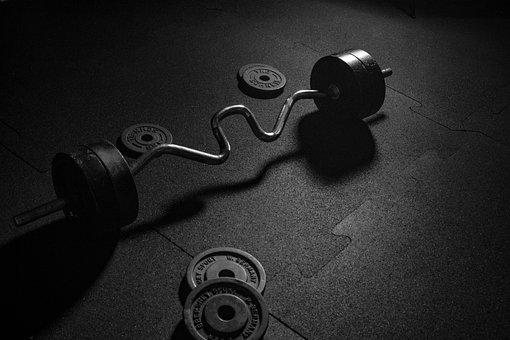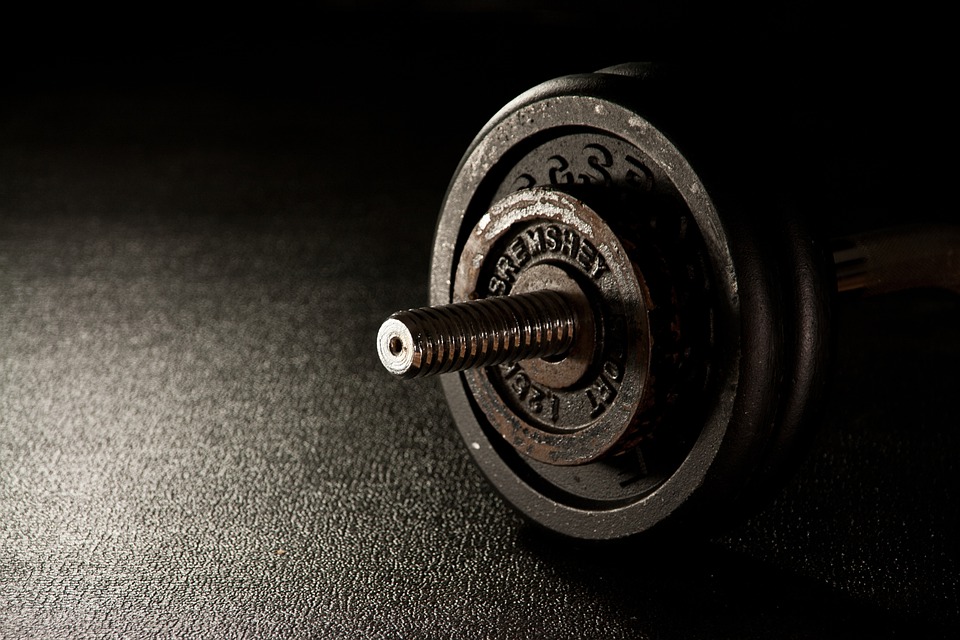
There are three important aspects of any training program designed to help someone gain strength and muscle mass: the number of sets per body part, the number of reps completed per set, and the frequency with which each body part is trained.
If you ask different professional bodybuilders how many sets, reps, or how often they train, you would be surprised at how different their answers are. This can be frustrating for aspiring bodybuilders who are looking for the best way to train.
The debate about the best way to train for muscle growth is something that is talked about a lot in places where people work out, like gyms and college weight rooms. There are so many different opinions that it can be confusing, even for scientists who study this topic. If you look at scientific studies about this topic, you will see that there are different conclusions in different studies. This is because most studies have two major problems. One problem is that they only involve a small number of people (usually 10-20), which is not enough to represent all bodybuilders. The other problem is that many studies use beginner weightlifters as subjects. Everyone knows that beginners respond to training in a different way than people who have been lifting weights for a while.
Researchers from Arizona State University in Mesa, Arizona, have published a study that could give us some solid answers about the optimum number of reps and sets and the best training frequency for inducing strength gains in both novices and trained weightlifters. They gathered data from 140 well-designed weightlifting studies and compared the optimum number of reps and sets and the best training frequency for inducing strength gains in both novices and trained (defined as having lifted weights consistently for more than one year) weightlifters. Then, the data were analyzed using a statistical method that calculated the optimal rep, set, and frequency scheme for beginner and advanced weightlifters.
Strong Results
The table presents the optimal variables for both beginner and advanced weightlifters to achieve the greatest strength gains.
The variable that is being lifted is the optimal rep range. The beginner range is 12-15 reps. The advanced range is 6-8 reps.
The recommended number of sets per body part for lifting varies depending on your experience level. For beginners, it is recommended to do 3-4 sets per body part. For those who are more advanced, it is recommended to do 4-6 sets per body part.
The number of exercises you should do for each body part varies depending on your level of experience. If you’re a beginner, you should do one exercise per body part. If you’re more advanced, you should do two exercises per body part. If you’re an expert, you should do three exercises per body part.
The text is discussing the optimal training frequency for different levels of lifters. Beginner lifters should train three days per week, while advanced lifters should train four days per week.
The lifting variable that dictates how you should split up your workouts depends on your level of fitness. If you’re a beginner, it’s best to do full-body workouts. If you’re more advanced, you can split your workouts into half-body routines.
Intensity Rules
The intensity of a workout refers to the number of repetitions of an exercise and the amount of weight lifted.
If you’re new to lifting weights, a recent study concluded that you should start with a higher number of reps and lighter weight. The study found that beginners make strength gains not just because of muscle adaptations, but also because lifting weights teaches the nervous system how to send signals to the muscles more efficiently. Using more repetitions allows the nervous system to get more practice.
If you’re an experienced trainer looking to increase your strength, you’ll see the best results by using heavier weights and completing fewer reps per set. According to the concept of progressive overload, as muscles adapt to repeated training, you must challenge them with heavier weight. Therefore, experienced trainers need to use pounds that are relatively heavier than those a beginner would use.
Pump Up the Volume
The term “volume” is used to refer to the total number of sets that are performed for one body part during a workout. So, for example, if you do three sets of three exercises for the chest, the total volume would be nine sets.
The Arizona team discovered that the best way for beginners to gain strength is by completing three sets of one exercise per body part.
When you are working out, FLEX suggests that you do basic exercises such as bench presses or incline bench presses for your chest. For your shoulders, try barbell or dumbbell overhead presses. To work your back, try barbell rows or pulldowns. For legs, try squats or leg presses. And for your triceps, close-grip bench presses or skull crushers are good options. For biceps, try standing barbell or dumbbell curls.
Advanced trainers should perform four to six sets per body part, researchers found. That means three sets of two exercises for most people. The best option is to pick one basic exercise for each muscle (as previously described for beginners) and one assistance exercise.
In order to work out your chest, you can do flat bench presses and incline dumbbell presses or dumbbell flys. For your shoulders, you can do barbell or dumbbell overhead presses followed by upright rows or lateral raises. For your back, you can do bent barbell rows or pulldowns followed by one-arm dumbbell rows or seated cable rows. A good leg workout would entail squats or leg presses followed by lunges or leg extensions. For triceps training, you can perform close-grip bench presses or skull-crushers followed by triceps pressdowns. And for biceps, you can follow standing barbell or dumbbell curls with preacher curls or incline dumbbell curls.
A two- or three-day training split is the best type of workout split. progressive overload is behind the increase in the number of sets per body part for advanced trainers. As muscles adapt, increase the amount of stress they receive. One way to do this is to increase the number of sets performed. Of course, the increase only enhances strength to a degree. Scientists found that when more than six sets per body part were performed, strength gains were not as significant as for those who trained with four to six sets per body part.
What’s the Frequency?
How often a body part should be trained each week is referred to as frequency.
The same applies to strength training for beginners. If you are a beginner, you should train each muscle group three times per week. You may choose to split your body part training over two workouts, which would result in a six-day-a-week program that works each muscle group three times a week. Weightlifting trains a beginner’s nervous system, and by training more frequently, the nervous system can adapt at a faster pace. To make sense of this concept, consider when children learn to ride a bike. The more often they practice, the faster they learn. The same applies to strength training for beginners.
While beginners should train a body part more than twice per week, advanced trainers should only train a body part twice per week to see the best strength gains. This is because advanced trainers’ nervous systems have adapted by this point and most of their strength gains come from adaptations in the muscle fibers themselves. Heavy weights and more total sets cause more muscle damage, so advanced lifters need more time to recover between workouts. This allows the muscles to regenerate muscle protein and grow larger and stronger.
Bottom Line
Therefore, if your goal is muscle growth, you can still use this research to help you achieve your goals. In addition to the results, there are other important things to take away from this study. First, the study’s conclusions are based on maximizing strength gains. What about maximizing muscle growth? Some would argue that these conclusions could also be applied to muscle growth. Although strength increases are not directly associated with more muscle mass, we know that being stronger will lead to more muscle mass. Therefore, if your goal is muscle growth, you can still use this research to help you achieve your goals.
You shouldn’t just stick to one type of training – you need to mix it up and change things around occasionally if you want to keep seeing optimal results.
Lastly, you should train like an individual. The study’s results may not work best for you, but you should try the suggestions for six to eight weeks. After that, change the variables.
6 Tips for Building and Maintaining Muscle
How to Build Muscle
The process of muscle hypertrophy is a slow one, so you need to be patient. In order to build muscle, you need to grow muscle cells. This process is called muscle hypertrophy, which is when muscle making outpaces muscle breakdown. Strength training plus an adequate amount of protein sets the foundation for building muscle. However, rest and recovery are just as important. The process of muscle hypertrophy is a slow one, so you need to be patient.
Fitness
Training at this level forces your body to adapt and increase muscle mass to handle the new level of stress. Stress your muscles by using weights, machines, or your body weight to build muscle mass and push your limits. This level of training will force your body to adapt and increase muscle.
The tension that you put on your muscles when you are doing strength training causes something called metabolic stress. This provides your muscles with the energy they need to be able to cope with the strain of the weight. If you keep going past the point where your muscles get tired, you will damage the muscle fibers. This damage to the muscle fibers causes the body to start the healing process, and the muscles will then grow.
To continue building muscle, increase weight load and the number of sets as your strength improves.
Kari Pearce, a professional athlete, gymnastic coach, personal trainer, and the creator of PHIIT Strength, says that in order to build muscle you must keep lifting increasingly heavy weights. When the weights you are using are no longer providing a challenge, it is time to increase the amount of weight you are lifting.
You can build muscle by varying the type of workout you do and by using compound movements. Pearce also suggests using compound movements to progress muscle growth. The more muscles you include in your movements, the greater the benefits.
Nutrition
To build muscle, you need to eat a healthy diet that includes a mix of protein, carbs, and fat.
You need at least 0.6 to 0.9 grams of protein per pound of body weight to maintain a positive protein balance, as stated by the International Society of Sports Nutrition (ISSN). You may need as much as 1.3 grams of protein per pound to gain muscle.
Protein is important for building muscle, but carbohydrates and fat are also important for helping your body achieve its goals. Carbohydrates from fruits, vegetables, and whole grains provide your body with energy and essential nutrients like fiber, vitamins, and minerals. Fat provides your body with energy and helps with producing the hormones you need to build muscle. Pearce recommends “drinking plenty of water and limiting alcohol consumption” to help your body achieve its goals.
Other Factors
It is important to let your muscles rest for 48 hours after working them out in order to allow your body to recover and build muscle.
In order to build muscle, you need to get a sufficient amount of sleep. While you sleep, your body repairs and builds muscle. If you do not get enough sleep, your body releases catabolic hormones, such as cortisol, which slows down muscle growth.
Adults need at least 8 hours of sleep when working out to build muscle, says Pearce. Getting an adequate amount of sleep keeps the anabolic hormone levels elevated, improving muscle recovery and growth.
Stress management also impacts muscle building. When an individual is constantly stressed, their stress hormones negatively affect muscle growth and strength. As stated by Pearce, stress also impacts workout performance. On days when an individual is highly stressed or has not had enough sleep, it is best to tone down the intensity of the workout.
How to Maintain Muscle
This loss of muscle mass can lead to a decrease in strength and mobility. This text is saying that if you don’t use your muscles, you will lose them. After the age of 30, you can lose up to 5% of your muscle mass every 10 years if you don’t stay active. This loss of muscle mass can make you weaker and less mobile.
Fitness and nutrition are important for maintaining a healthy body.
Fitness
Training regularly is essential to keeping your muscles strong. To maintain your strength, you need to put your muscles under stress, just as you do when you’re trying to build muscle. This means picking a weight that’s heavy enough, and doing enough repetitions, that the last one is really hard to lift.
Both Yoga and Pilates are excellent exercises for building muscle and maintaining a lean body mass. They are also both great for improving flexibility.
Nutrition
The average person needs about 50 to 60 grams of protein per day. Good nutrition includes consuming high-quality protein to maintain muscle. The ISSN states that 0.6 to 0.9 grams of protein per pound of body weight is needed to maintain muscle. The average person needs approximately 50 to 60 grams of protein per day.
A diet with a balance of all food groups should help you get enough protein as well as other essential nutrients.
Other Factors
How you manage stress right now will determine how strong your muscles will be later. A study done in 2014 showed that stress decreases muscle strength.
You need to create good sleeping habits to prevent the decrease of muscle mass and strength. Aim for a minimum of 7 hours of sleep a night.














